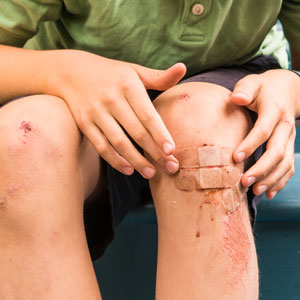
Shutterstock
Cuts and grazes are part of growing up. Small wounds are usually easily treated at home with a little first aid and lots of TLC. Large, or severely bleeding wounds need immediate medical attention, as blood loss can lead to falling blood pressure and shock.
Take action:
Wash your hands before handling any wound, or wear sterile disposable gloves; for smaller cuts, hold the wound under cool, running water to remove dirt or bits of grass and to assess how deep it is; consider putting a bandage on the cut or graze, especially on the hands, legs and feet; stitches might be required if:
Take action:
Wash your hands before handling any wound, or wear sterile disposable gloves; for smaller cuts, hold the wound under cool, running water to remove dirt or bits of grass and to assess how deep it is; consider putting a bandage on the cut or graze, especially on the hands, legs and feet; stitches might be required if:
- the wound edges do not come together easily
- the wound is deep (more than ½ cm), gaping, or has a jagged edge
- the wound is longer than 2 cm and deeper than half a centimetre
- muscle, fat or bone is visible
- there are deep cuts on the face, scalp, hands or joints.
Read more here on first aid for cuts.
(Photo of child with scraped knee from Shutterstock)




 Publications
Publications
 Partners
Partners













